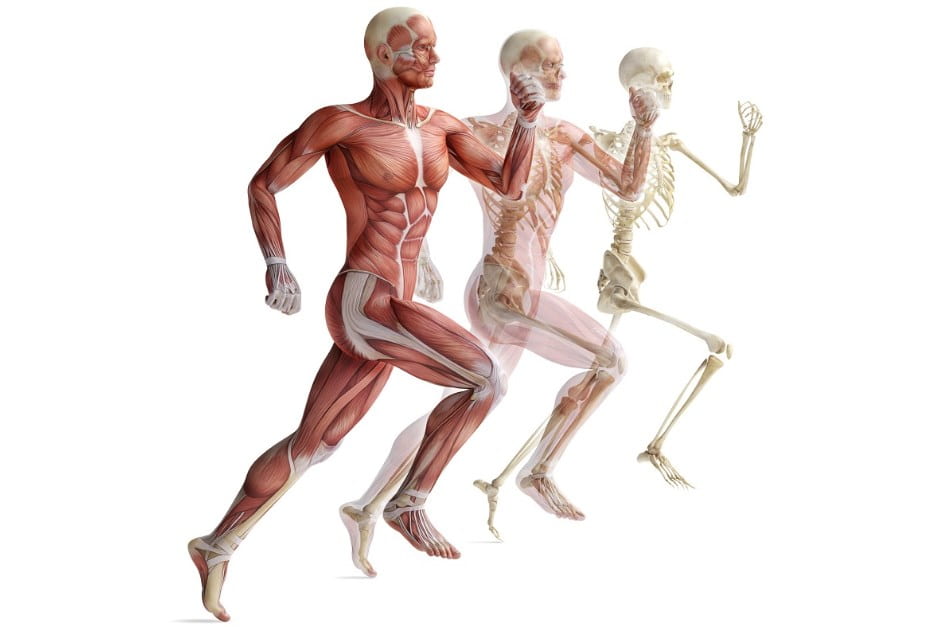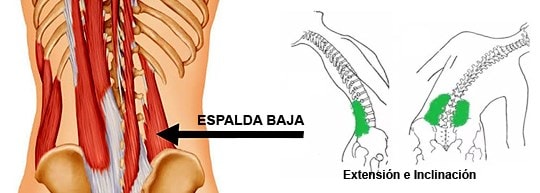Let the kinesiologistía of the spine explains cómo, any vévertebra in each spinal motion segment, can perform various combinations of movements to maintain spinal stability.

This balance is important to protect nerve structures and prevent mechanical deteriorationánico early spinal components. It must be recognized that the functionsáThe important functions of the spine are to support the trunk and protect the méspinal game.
The bones, discs and ligaments help maintain spinal stability, stimulating proprioceptive impulses that are sent to the central nervous system. This in turn coordinates movement and reflexes.
If the patient presents back pain and/or raíz nervous, mayíwe love being in the presence of someoneún spinal imbalance. The transfer of force between the upper and lower extremities depends on the stability of the spine..
Remember that the length of the vertebral columníto according to género. In men an average length of 70-75cm is expected and in women 60-65cm. In the elderly this length decreases due to crushing of the intervertebral discs, which in some cases results in pain.
The etiologyíto of pain in the spine may be associated with degenerative diseases What: osteoarthritis of the jointón cigapofisaria, degenerationón of the intervertebral disc, spondylolisthesis, etc. These can have mechanical loadsáunique with an abnormal range of motion or mechano-biological originógica for causes of aging, smoking, etc.
Index
Contributions of kinesiologíto the spine
In this section we will be discussing the mobility and stability of the spine.. The to intendón is to allow the reader to complete their knowledge of kinesiologíto the spine.
The columna lumbar isá involved in the majoríof the functional movements of the body, it offers support to the structure of the human body. Knowledge of kinesiologíand provide informationóNo on etiologyíto the pathologiesíace of the spine and allows to create strategies to preserve the correct functionality of the spine.
The investigationón about kinesiología of the vertebral column about the precise movements of the spine and the conditions of load on it, allows to determine the mechanical environmentásingle of spinal segments.
If motor control does not work properly óoptimum in their respective functions, can cause pain or dysfunctionón in the spine.
neuromusculoskeletal systemético
The mobility and stability of the spine isán governed by a complex neuromusculoskeletal systemético that, at the same time, is subdivided into three subsystems:
- Made up of the disk, ligaments, bones and múpassive centuries
- Representing by tendons and múactive centuries
- Made up of the nervous system and the neural elements found within the passive and active structures
A dysfunctionón of any of these three subsystems leadía to one or más of the following responses in the other subsystems:
- An immediate compensatory response, normalizing the functionón
- Adaptationón long term to normalizeíto the functionón, but with a stabilization systemón altered spinal cord
- Driveíto a dysfunctionón general, and as a result pain appears
The intervertebral disc is a soft tissue structure that allows rotations and translations of the vévertebrae. The neuromuscular system contributes to the stability of the spine. The Múmuscles are perfectly coordinated to control movements, providing tensionóin theápassive stica and balancing the actionóno gravity.
physiological movementsógic or normal spinal cord
Each vertebra can perform 3 rotation movementsón and transferón. during the flexión – extensionón, at vévertebra moves around the axis of rotationón transversal. Each of the six degrees of freedom of motion that a vévertebra can perform with respect to the other vévertebrae, has its own range of motion, neutral zone and the zoneástica.
bif behavioránonlinear physics of the joints in the spine, probably meets two needs: allow movements near neutral posture, with the míminimum muscular effort possible and guarantee joint stability.
The hipómechanistic thesis of spinal pain in asymptomatic subjectsáticos affirms that the neural zone and the range of movement are normal. The neutral zone increases above the lílimits of the pain-free zone in an unstable spine. Muscle training improves spinal stiffness reducing the neutral zone and freeing the spine from pain.
Acción muscular a kinesiologistíto the spine
 And tégeneral terms, the Múmuscles participate as stabilizers and moment generators in the back. In medicine there is a debate about whicháthey are the mústabilizing muscles and cuáthey are generators of moments.
And tégeneral terms, the Múmuscles participate as stabilizers and moment generators in the back. In medicine there is a debate about whicháthey are the mústabilizing muscles and cuáthey are generators of moments.
The Múinternal muscles mátransverse s of the abdomen, in companyñía of the internal obliques proactively control the stability of the spine.
biomech observationsánicas reveal that the múcenturies deep intrínsecs control intervertebral movement, while the múmultiple segments are involved in controlling the orientationón in the spine.
The nerve endings areán present in passive structures, such as the annulus fibrosus of the intervertebral disc and in the posterior facet joints. These structures provide feedbackón in positionón and movements of passive structures, in order to regulate the tensionón muscle to optimize mobility and stability.
Kinesiologistíto of the múlumbar muscles of the back

In the movements of the vertebral column isán involvedúcenturies that actúeven in different regions.
One person standing, can be distinguished by the following functions:
stabilizationóno of posture
A kinesiologistíto the spine, the Múlumbar centuries, like joints and ligaments, facilitate stabilizationócolumn no. during movement forward and to the sides of the center of gravity. A movement of the center of gravity backwardsás of the lumbar spine, activate the múabdominal muscles, contrayéndolos.
When a person is in a positionón sitting, no support from arms or back, the activity of the músculi of the back beá same as standing.
Active movements
during the flexión, the contribution of the múlumbar muscles is directly proportional to the degrees of flexión. This movement causes an increase in pressureóno on disk. La extensionón of the positionón the flexiódoes not look accompaniedñada of a great activity of the múlumbar centuries.
 When lifting a heavy object
When lifting a heavy object
When lifting weight, the Múlumbar muscles are assisted by the hip extensors, since this movement is an actionócombined n of the extensionón the spine and hips. The contribution of the múAbdominal muscles are notá defined and is still being studied.
It is important to lift objects with a straight back, because if the back isá curved, The núcleo within the disk moves in the directionóbib number. If this happens, the risk of a posterior annulus fibrosus rupture is increased.
The distance between the object to be lifted and the body becomes important, at a shorter distance less risk to the back, from a biomech point of viewánico.
